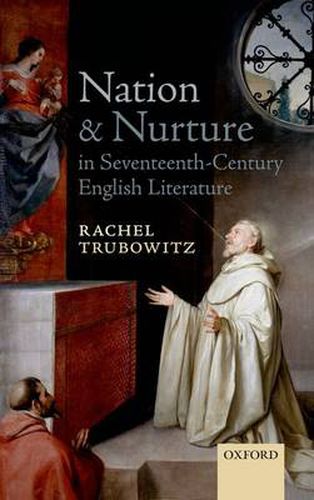Readings Newsletter
Become a Readings Member to make your shopping experience even easier.
Sign in or sign up for free!
You’re not far away from qualifying for FREE standard shipping within Australia
You’ve qualified for FREE standard shipping within Australia
The cart is loading…






This book connects changing seventeenth-century English views of maternal nurture to the rise of the modern nation, especially between 1603 and 1675. Maternal nurture gains new prominence in the early modern cultural imagination at the precise moment when England undergoes a major conceptual paradigm shift-from the traditional, dynastic body politic, organized by organic bonds, to the post-dynastic, modern nation, comprised of symbolic and affective relations.
The book also demonstrates that shifting early modern perspectives on Judeo-Christian relations deeply inform the period’s interlocking reassessments of maternal nurture and the nation, especially in the case of Milton. The book’s five chapters analyze a wide range of reformed and traditional texts-including A pitiless Mother, William Gouge’s Of Domesticall Duties, Shakespeare’s Macbeth, Charles I’s Eikon Basilike, and Milton’s Paradise Lost, and Samson Agonistes. Equal attention is paid to such early modern visual images as The power of women (a late sixteenth-century Dutch engraving), William Marshall’s engraved frontispiece to Richard Braithwaite’s The English Gentleman and Gentlewoman (1641), and Peter Paul Rubens’s painting of Pero and Cimon or Roman Charity (1630).
$9.00 standard shipping within Australia
FREE standard shipping within Australia for orders over $100.00
Express & International shipping calculated at checkout
This book connects changing seventeenth-century English views of maternal nurture to the rise of the modern nation, especially between 1603 and 1675. Maternal nurture gains new prominence in the early modern cultural imagination at the precise moment when England undergoes a major conceptual paradigm shift-from the traditional, dynastic body politic, organized by organic bonds, to the post-dynastic, modern nation, comprised of symbolic and affective relations.
The book also demonstrates that shifting early modern perspectives on Judeo-Christian relations deeply inform the period’s interlocking reassessments of maternal nurture and the nation, especially in the case of Milton. The book’s five chapters analyze a wide range of reformed and traditional texts-including A pitiless Mother, William Gouge’s Of Domesticall Duties, Shakespeare’s Macbeth, Charles I’s Eikon Basilike, and Milton’s Paradise Lost, and Samson Agonistes. Equal attention is paid to such early modern visual images as The power of women (a late sixteenth-century Dutch engraving), William Marshall’s engraved frontispiece to Richard Braithwaite’s The English Gentleman and Gentlewoman (1641), and Peter Paul Rubens’s painting of Pero and Cimon or Roman Charity (1630).